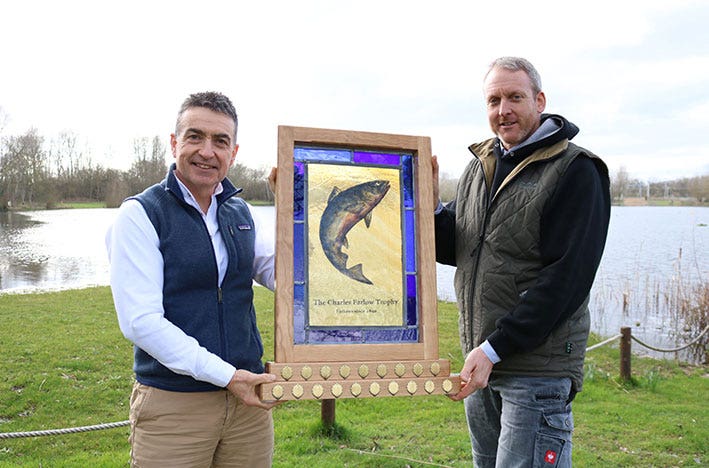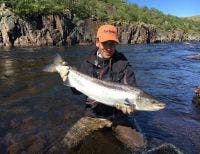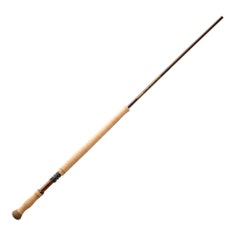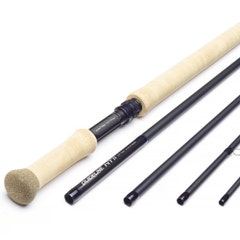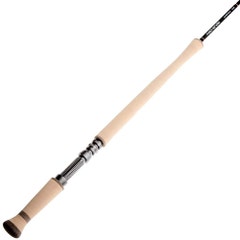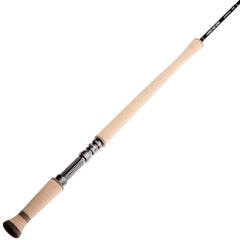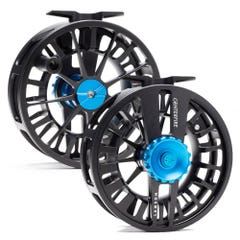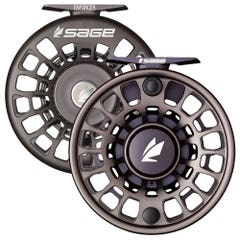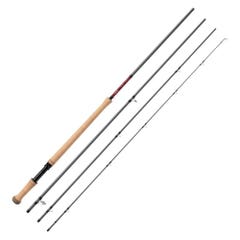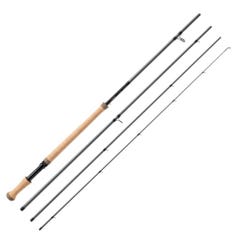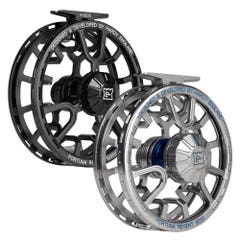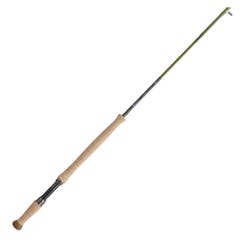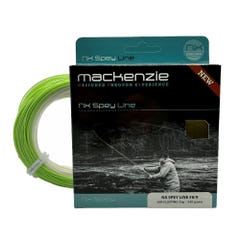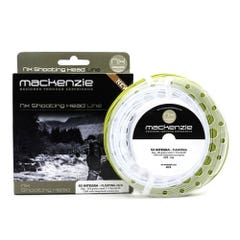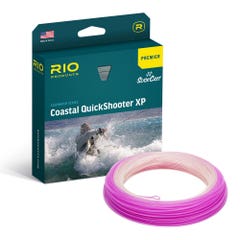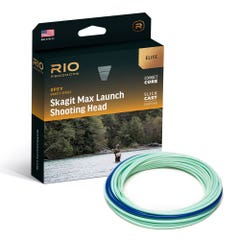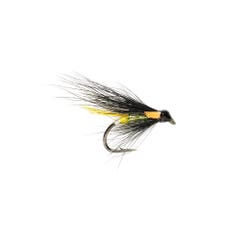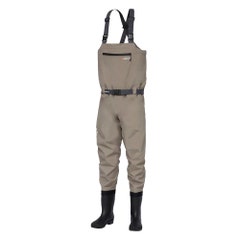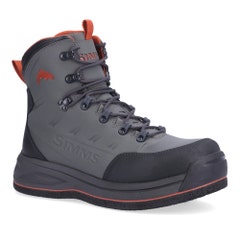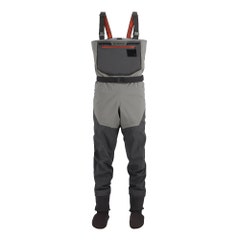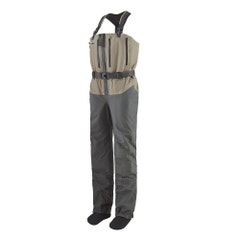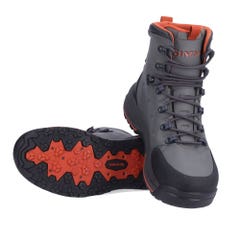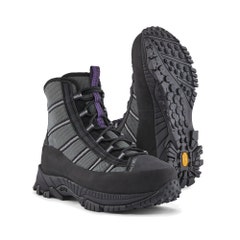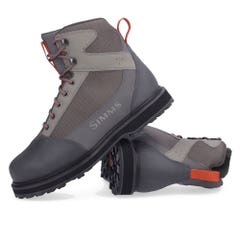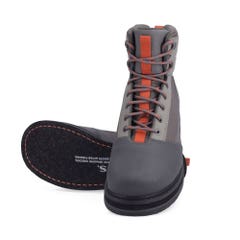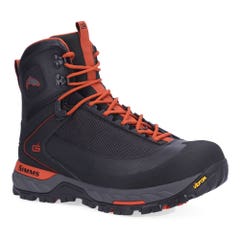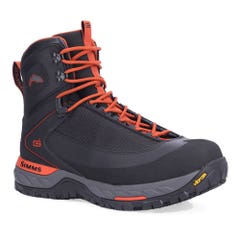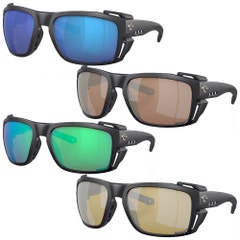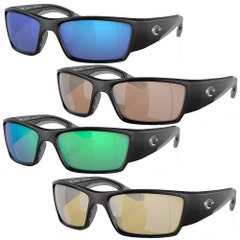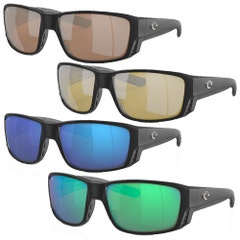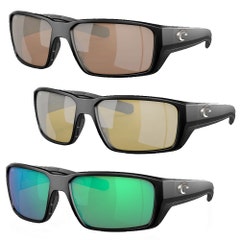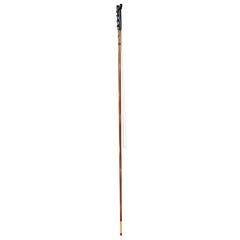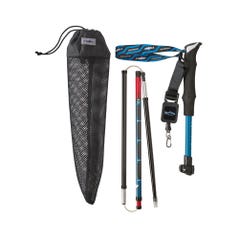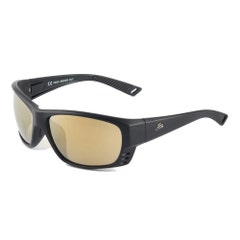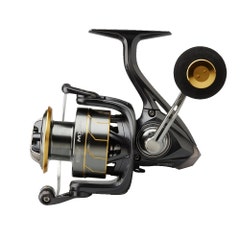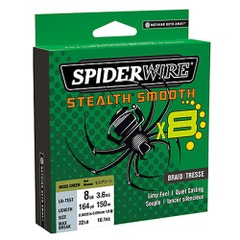The Atlantic salmon is to many anglers ‘The King of Fish’ and the rich history of salmon fishing stretches back several hundred years. From its origins in the famous rivers of Scotland, recreational salmon fishing has spread across the whole of the fish’s range, from the east coast of Canada and the USA to Iceland, Scandinavia and Russia, and from the Baltic Sea to as far south as the Iberian Peninsula.
During those many decades the way we fish for salmon has gone through many dramatic changes, from the tackle we use, the way we fish and our attitudes to the conservation of this iconic species. This in-depth guide will primarily focus how to fish for salmon in the British Isles, although much of the information will be relevant wherever you find this legendary fish.


Understanding Salmon
Atlantic salmon are born in freshwater, hatching out from eggs in the early spring laid by their parents on ‘redds’ or nests in the gravels and stones of the riverbed. After hatching as ‘alevin’, the young salmon spend around 2-3 years in the river, growing through the ‘fry’ and ‘parr’ stages of their life by feeding mostly on invertebrates, much in the same way that a trout lives its life. When the young salmon reach ‘parr’ stage, they will be around 4-6 inches in length and are then ready to become ‘smolts’, turning from their mottled brown river camouflage to silver in preparation for their migration downriver to the sea, and they can often be seen in the springtime moving downriver in shoals.




Once in the marine environment smolts undertake an epic migration to their offshore feeding grounds which can be as far away as Greenland, spending at least 1 winter at sea, and in rare cases as many as 4-5 winters, before making their return journey home to their natal rivers. During this time they pack on the weight and reach maturity, enabling them to spawn the next generation of fish. It is on their homeward upriver migration where we have the opportunity to catch them! Those fish that return after just 1 winter at sea are known as ‘grilse’ and typically range in weight from 2-6 pounds. Larger multi-sea winter salmon mostly spend either 2 or 3 winters at sea and these are the fish that can range from 7-8 pounds to well over 20 pounds in weight. Larger fish still might have spent 4 or even 5 winters at sea - true monsters!
When to Fish for Salmon
The Salmon Fishing Season
In the British Isles it’s possible to fish for salmon in every month of the year, from January to December, but this does not apply to every river. Different rivers have different salmon fishing season dates and it’s important to be aware of local rules and regulations. As an example, here are some notable British and Irish salmon rivers and their corresponding season dates:
England
River Tyne: 1st Feb - 31st Oct
River Eden: 15th Jan - 14th Oct
River Test: 17th Jan - 2nd Oct
River Camel: 1st Apr - 15th Dec
Scotland*
River Tay: 15th Jan - 15th Oct
River Spey: 11th Feb - 30th Sept
River Dee: 1st Feb - 15th Oct
River Tweed: 1st Feb - 30th Nov
*(Note that salmon and sea trout fishing is not permitted on Sundays in Scotland)
Wales
River Wye: 3rd Mar - 17th Oct
River Towy: 1st Apr - 7th Oct
River Usk: 3rd Mar - 17th Oct
River Taff: 20th Mar - 17th Oct
Northern Ireland
River Finn: 1st Mar - 15th Sept
Republic of Ireland
River Moy: 1st Feb - 30th Sept
Delphi Fishery: 1st Feb - 30th Sept
River Boyne: 1st Mar - 30th Sept
It’s also important to know that certain areas of a river system might be subject to their own seasonal restrictions and bylaws.


Spring, Summer and Autumn Salmon Fishing
Given that there are many different salmon rivers in the British Isles with varying season dates, anglers tend to group the salmon fishing season into three main parts: spring, summer and autumn. Each time of the season demands a different fishing approach, different fishing conditions and challenges. Here we’ll give an overview of what each part of the season usually entails. Follow the individual season links to explore our advice in greater depth.
Spring Salmon Fishing
We usually define this period of the season as running from January (when the first rivers open) until the end of May. Anglers fishing in the spring are looking for the ultimate prize - a ‘springer’. This is often the time of year when the largest, fattest salmon enter our rivers, packed with muscle for their cold water journey and often swimming far into the upper reaches of a river system and its tributaries. The chance of hooking a large, silver spring salmon is the challenge that draws many anglers to the riverbank in the cold, frosty early months of the year. Whilst the potential reward is great, overall numbers of fish running at this time of year are usually low and the quest for a springer can feel like trying to find a needle in a haystack. Fishing in the early spring is not for the feint-hearted! It requires dedication, determination and an ability to put up with horrible weather and many blank days. Cold temperatures, high water levels and wintery winds can make this a seriously challenging experience.




As we move towards the latter part of spring, from late March through to April and May, things usually start to pick up and numbers of fish start to slowly increase. This is a great time of year to fish, when large ‘springers’ are still running and the days are starting to get longer, milder and a bit more comfortable to fish in.
Spring might not be the best time for beginners to take their first steps into salmon fishing, but for many experienced salmon fishers it’s the pinnacle of the sport, demanding skill, experience and determination to succeed. The tackle we use at this time of year is often challenging for less experienced anglers, i.e sinking fly lines, sink tips, longer fly rods and weighted tube flies, not to mention iced-up rod rings and frozen fingers!
Summer Salmon Fishing
For many salmon anglers, this will be when we first picked up a salmon rod and when we still do most of our fishing. This is the core part of the salmon fishing season, usually defined as running from June through to the end of August. This is typically the most productive time of year, when the early running spring fish are settled as ‘resident fish’ in the pools and runs of fresh summer salmon are entering the river regularly from the sea. This is the time which also sees runs of grilse (1 sea-winter salmon) entering our rivers, often in huge numbers. Hit it just right at this time of year and it’s possible to land half a dozen salmon in a day, sometimes more! This part of the season is usually the easiest to fish in, where low river levels necessitate only the use of floating, easy-to-cast fly lines and small flies. Long fishing days and sunny picnics on the riverbank make the whole experience an absolute joy, whether or not you manage to catch a salmon that day.
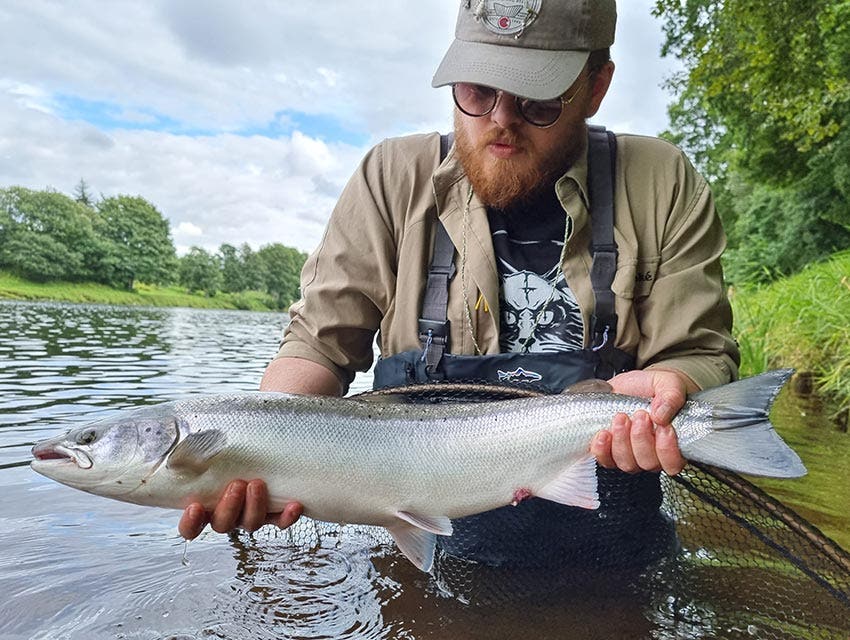



Summer can bring challenges too though, especially at times of low water or drought. A combination of low water, bright sun and high air and water temperatures does not make for good salmon fishing! A mild summer’s day with an overcast sky, light breeze and pleasant water level is ideal.
Autumn Salmon Fishing
Also referred to as fishing at the ‘back end’, autumn is another excellent time to fish for salmon on many rivers. We tend to think of this as running from September until the last of the rivers close for the year. In the case of rivers like the Spey, the autumn season is short as the river closes on September 30th. The Tweed however, famous for it’s autumn salmon fishing, remains open until the end of November and is one of our prime back-end fisheries.


Whilst some rivers can experience excellent runs of fresh autumn salmon (‘fresh’ meaning silver fish which have just entered from the sea), at this time of year we’re often fishing for salmon that have been resident in the river for some time.
These salmon will have totally transformed in appearance to adapt to their freshwater environment and in preparation for the spawning season to come, changing from the bright silver fish which entered the river into a coat of brown and red, often referred to as wearing ‘tartan’.
As temperatures begin to drop, these fish can become more active and aggressive again after many weeks in an almost hibernation-like state during the hot summer months. It’s often said that the first frost of the year switches the fish on again. Fishing at this time of year is often your best chance at landing a true monster salmon - a big springer that evaded capture all year.
This time of year can also offer action-packed sport, with aggressive salmon snatching at anything that comes across their territory. The larger ‘coloured’ salmon which are often encountered at this time are seriously impressive to behold too, but there should also be the odd ‘fresh’ silver fish still running.
Autumn salmon fishing often means unpredictable weather and unsettled river levels, so it’s really a time of year to pack a huge variety of gear and clothing. You might be fishing with a full floating line one day, only to be met with a dirty, flooded river the following morning, necessitating a complete tactical change.


Salmon Fishing Tips and Advice
We’ve given you an overview of the different times of the season in which it’s possible to fish, and what you might expect, but how exactly do we fish for salmon? As with any form of fishing, there are a multitude of ways to achieve success and experimentation can often lead to great results, but there are some generally accepted technical basics that work effectively for Atlantic salmon almost everywhere.
Knowing Where the Fish Are
Salmon are usually fished for in ‘pools’ within a river, defined as deeper areas which are often bordered by a fast run or set of rapids at the ‘head’ of the pool and another run or rapid section at the ‘tail’ of the pool. Salmon will swim up through the fast water and then stop in pools, either to rest momentarily before they tackle the next obstacle (which could be a waterfall for instance), or because they feel comfortable making this area their river home. Perhaps they found the perfect lie behind a boulder which offers protection, or perhaps the pool has the ideal gravelly substrate for spawning, in which case it’s time to claim the spot! Whatever the case may be, fishing for salmon that are resting in pools will usually be more effective than fishing in fast running water hoping to collide with a passing fish.


Salmon Behaviour
After entering fresh water, Atlantic salmon cease feeding, often for many months. As such, one of the challenges of salmon fishing is that we are not trying to tempt a hungry fish. Instead, our fly patterns or lures are designed to provoke an aggressive response from the fish, provoke a curiosity-reaction, or perhaps even to re-kindle that feeding instinct by presenting certain suggestive fly patterns. Many of the most popular modern salmon flies are tied to roughly resemble shrimp or sandeels - popular items on the menu during a salmon’s marine life stage.
How to Fish a Salmon Pool
Given that salmon will be facing upstream with water flowing over their gills, and that their bodies are streamlined to allow them to hold position in a current with very little energy, salmon fishers usually fish a pool from the top to the bottom, working their way downstream.
By standing on one side of the river and casting across towards the other bank, we can allow our fly or lure to swing back across towards our side, effectively enabling us to ‘cover’ the water. By repeating this process and taking a step downstream after each cast, we slowly cover the entire pool from the top to the bottom, hopefully swinging a fly tantalisingly in front of a salmon. Most modern salmon flies and fly lines are designed to be fished in this way.




That’s not to say that fishing upstream for salmon doesn’t work - indeed it’s an effective method on some English chalkstreams, as well as for certain techniques employed on a number of Canadian, Icelandic and Russian rivers. However it’s certainly not the norm and, generally speaking, salmon fishing is done by casting downstream.
Hooking a Salmon
If you’ve got to this point, well done! Salmon fishing is about to get really exciting… This is the moment we all wait for - the pull on the line from an Atlantic salmon is a heart-stoppingly exhilarating moment! If all has gone to plan, your fly will have been swinging across the river and ‘bang’! Your line starts peeling off your reel and you’re in!
If there’s one thing to remember in this moment it’s… DON’T STRIKE! As we’re fishing downstream, striking a salmon is a big no-no, possibly resulting in us pulling the hook out from the fishes mouth. Allow the salmon to take the fly and turn away with it before gently lifting your rod to an upright position. This should hopefully (but not always!) ensure that the fish is well hooked in the side of the mouth.
Fighting a Salmon
Once the fish is hooked, the battle truly begins! Keep pressure on the fish, allowing the flex of your rod to work as a shock absorber. If the fish wants to run, allow it to take line from your reel with an appropriately selected drag setting - not too tight to risk breaking the line, but not too weak either - we want to tire the fish slightly in order to get it under control. The aim is to beat the fish quickly without tiring it out unduly, ultimately allowing us to release a fit fish back into the river.


Landing a Salmon
You’ve been fighting your salmon for a while and you start to feel the fish tiring, you’re starting to gain control over the fish. It’s important now to be confident - trust in your equipment and put some pressure on the fish, using your rod to guide the fish away from powerful currents and bring it towards the shore. Have a friend ready and waiting slightly downstream of you with a landing net just under the surface of the water.




As you bring the salmon close, apply pressure to raise the fishes head to the surface which should enable you to slide the fish sideways towards the net. Don’t worry if this stage requires a few attempts - it usually does, and this is all part of the excitement of salmon fishing. When a fish sees the net it will often make another dash for freedom so be prepared for another unexpected burst of energy. When you have the fish at the surface, gently slide it over the top of the net so the netter can lift from below. Job done! It’s important now to keep the fish in the net in the water at all times, allowing it to recover before release. Never lift a salmon onto dry land.
Unhooking a Salmon - Staying Calm is the Key
With the fish in the net in the water, it’s time to take a look at your well-deserved prize, maybe snap a quick photo and unhook the fish so it can be sent on its way. Get down into the water (that’s what waders are for!) and use a sturdy pair of forceps to grab hold of your hook and remove it from the fish, all the while ensuring that you only handle the fish with wet hands and keep air exposure to a minimum. If your fish is proving difficult to control, a handy trick is to turn the fish upside down in the net. This has a disorientating effect and will often instantly subdue a fish.


Releasing a salmon
You’ve now successfully unhooked your fish, keeping it in the water at all times. If you wish to have a memento, now’s the time to snap a quick photo holding the fish gently in, or just above, the water for a few brief seconds. To release your salmon, gently hold it in the current facing upstream, allowing water to flow over its gills until it swims off confidently. Try to avoid releasing fish in the shallows if the water has been stirred up with your movements, instead find a clear area of water in which to let your fish swim away. A good release is one of the most satisfying moments in salmon fishing, having done battle with an amazing creature before seeing it swim off fit and healthy.
Good fish handling and catch and release practice is important to us - there’s more on that further down the page!


Next though, let’s look at the tackle you’ll need to go salmon fishing.
How to Fly Fish for Salmon
In this section we’ll cover the basic equipment required for salmon fly fishing. Rivers of different sizes and characteristics may require their own unique approach, but in general the salmon fishing tackle used is as follows:
Salmon Fly Rods
Most often, salmon fishing in the British Isles means using a double-handed fly rod, ranging from around 12ft - 15ft in length. Shorter rods are more suitable for smaller rivers and low water conditions, while longer, more powerful rods are used on wider rivers that require longer casts to cover the water effectively. You may see salmon fishers using shorter switch rods and single handed rods too, but these are usually the preserve of only the smallest rivers. Double-handed fly rods also enable fishers to ‘Spey-cast’ - the core fly casting technique associated with salmon fishing, and designed to allow the caster to deliver the fly to their chosen spot in the river when overhead casting might be restricted due to high banks and vegetation. As salmon rivers are most commonly found in valleys and gorges, and are typically wooded along their banks, the Spey-casting technique has become an essential part of the salmon fisher’s skill set.
Salmon Fly Reels
Your fly rod should be balanced with an appropriately sized fly reel which is capable of holding your fly line and plenty of backing line too. Salmon are powerful, energetic fish that can go on long, blistering runs before being ready for the net. In addition, your fly reel should feature a strong, reliable drag system too to help you get a big fish under control.
Salmon Fly Lines
Spey lines
The most traditional style of salmon fishing line, featuring a long belly section and graduated taper profile. Ideal for delicate presentation and exceptional line control.
Scandi lines
A form of shooting head fly line which has taken the salmon fishing world by storm over the past several years. Developed in Scandinavia, this fly line style features a long, thin section of running line leading up to much shorter, heavier section known as the ‘head’. By allowing the weight of the head to flex your rod, this can be shot through the air with the running line trailing behind. An excellent choice for larger rivers where distance is important, but also a great choice for beginners getting to grips with their casting due to their easy-loading nature.
Skagit lines
Originally developed in the Pacific Northwest for Pacific salmon and steelhead fishers needing to cast very large flies, the Skagit line has also made its way into the Atlantic salmon fisher’s arsenal in recent years. Skagit lines are super-heavy shooting heads with a more aggressively short head section than the aforementioned Scandi lines. Useful in the early part of the salmon season on the largest rivers when casting heavy sink tips and weighty, wind-resistant tube flies.
Sinking Tips
Certainly a must-have item for the modern salmon fisher to carry, sink tips are essentially short sections of fly line ranging from 5ft - 15ft in length and are available in many different sink rates. These can be attached to the end of your line to fine-tune your presentation. You might also see these referred to as ‘poly leaders’ or ‘poly tips’.
Salmon Flies
There are hundreds if not thousands of salmon flies out there, and the history and development of salmon fly patterns is almost as rich as that of salmon fishing itself! Wherever you go to fish, different flies will be favoured over others based on river characteristics, water clarity, water colour and many other factors. There are two main styles of salmon fly which have each spawned a number of sub-styles. Those are ‘dressed’ flies and ‘tube’ flies.
Dressed Flies
Essentially, a dressed fly is one in which the dressing is tied straight onto the hook. This may be a single, double or treble hook. In the UK, double-hooked flies are the most common. Certain rivers and fisheries may have rules on which hooks are allowed, so be sure to check!
Tube Flies
This is where the dressing is tied onto a tube, the leader is passed through and a hook of the angler’s choice is tied onto the end. This allows a degree of customisation but, most importantly, tube flies can be tied on different materials to achieve different weights and therefore to allow the angler to fish at different depths. From lightest to heaviest, tube flies are commonly available in: plastic, aluminium, brass, copper and tungsten.
Leader Material
The more you get into salmon fishing the more you’ll encounter the age-old debate of monofilament vs fluorocarbon! Both of them work - just make sure you fish with something strong enough to land a big salmon! For salmon fishing in the British Isles, we typically use leaders ranging from 12lbs - 20lbs in breaking strain depending on the conditions and techniques being used. Anglers fishing the super-clear grilse rivers of Iceland with micro flies may fish as light as 8lbs, and anglers tackling the legendary big fish rivers of northern Norway and Russia might fish as heavy as 40lbs!
Landing Nets and Other Items
Make sure your net is big enough for a salmon to fit in! It’s also important to carry tools such as forceps which allow you to handle and unhook salmon safely and easily, minimising handling time and ensuring you release a healthy fish back into the river to continue its journey.
Waders and Wading Boots
Essential bits of kit for salmon fishing as we’re often wading down through pools a distance away from the bank to enable us to cast effectively and cover the fishy-looking spots. Waders are also an essential item to assist with fish care - more on that later!
Safety Equipment
We always recommend that salmon fishers wear a self-inflating life vest and carry a wading staff. Polarised sunglasses should also be regarded as essential safety equipment too, helping to protect your eyes from wayward hooks.
How to Spin for Salmon
Here at Farlows we also kit out anglers who like to use spinning gear to target salmon. This is a preferred technique on a number of British and Irish rivers and is also the method many use to catch their first ever salmon before going onto to learn how to Spey-cast with a fly rod.
An overview of salmon spinning gear is as follows:
Salmon Spinning Rod
Spinning rods used for salmon fishing in the UK and Ireland are usually between 9ft - 11ft in length with a casting weight of 20-60g. A rod which falls into this category will be able to cast all of the most popular lures.
Salmon Spinning Reel
As with a fly reel, your spinning reel should feature a strong, smooth drag system to help subdue powerful fish.
Line
Braided fishing line is the most popular spinning line nowadays, with salmon anglers typically using braid in the 20-30lb breaking strain class. Monofilament line can also be used in a similar strength but we prefer braid for its sensitivity and casting performance.
Lures
There are a number of popular lures used in British and Irish waters, the most well-known being the Abu Garcia Toby and Toby Salmo, Irish Rubber Tail Spinner (also known as the ‘Flying C’), the Devon Minnow, and finally hard plastic lures such as the Rapala X-Rap.
Catch / Release and Salmon Conservation
Atlantic salmon populations have suffered a decline in recent decades across most of their range. This can be attributed to a number of factors, including but not limited to: pollution, aquaculture (salmon farms), climate change, predation and changing agricultural practices. With such threats now recognised, attitudes towards the killing of salmon have shifted hugely. Where once caught salmon were almost universally ‘knocked on the head’ and taken for the table, nowadays the vast majority of salmon are released back into the river with only a small proportion harvested according to local river rules and regulations. Catch and release is an important conservation tool and, when done correctly, studies have shown that almost 100% of salmon will successfully recover. The important words there are ‘when done correctly’!
We believe it’s our responsibility as modern salmon anglers to treat our quarry with respect and to take only a very limited number of fish for personal consumption.
Here are some key principles to follow for effective catch and release:
- Fight fish quickly with strong tackle
- Avoid large treble hooks, particularly on lures. (These should be changed to singles).
- Avoid fishing for salmon when water temperatures exceed 20C
- Use a knotless, rubber mesh landing net
- Unhook fish in the water, not on dry land
Minimise air exposure to less than 10 seconds (plenty of time to snap a couple of photos). For more a more detailed look at best practice fish handling, you can read our guide on effective salmon catch, photograph and release techniques (CPR).


If you’d like to learn more about Atlantic salmon conservation, there are a number of groups, river trusts and charities who are working hard to ensure our sport has a sustainable future for everyone to enjoy.
You can also find our more about Farlows commitment the Missing Salmon Alliance here.
How to Find Salmon Fishing
For UK salmon fishing, FishPal is an excellent platform for booking a day or even a whole week. Most of the country’s major salmon rivers are covered on their bookings website where you can also find information on various ‘beats’. A salmon river may be broken down into a number of beats and each beat is a section of river controlled, owned or operated by a different individual, estate or syndicate. By browsing different beats on FishPal you will be able to look at catch statistics for many beats, helping you decide when to plan your trip, as well as information on facilities and location.
Not everywhere is available on FishPal though, and it’s often by word of mouth that we find out about good salmon fishing spots. After all, the sharing of epic fishing tales is something we all have in common! The Farlows team has a wealth of salmon fishing experience and we’re always available to provide expert advice and guidance. Come in and pay us a visit in store or call us on the phone, we’re always happy to help
Plan Your Next Salmon Trip
Itching to get back on the river? Our friends at FishPal can make it happen! With access to some of the best beats available, you can also find out information about water levels and the latest catch reports.
Learning How to Spey Cast
As with any new skill, having lessons with a qualified instructor will help accelerate the process, and fly casting is no exception. Our sister company, Sportfish, offers a programme of individual and group tuition at the Sportfish Game Fishing Centre in Theale, Berkshire. There’s nowhere better to start your salmon fishing journey than on the casting platform on Haywards Farm Lake with one of the outstanding Sportfish instructors.


Salmon Fishing Overseas
Once you get hooked on salmon fishing, you’ll soon realise that this obsession can lead you to some incredible places around the world. For some, fishing for Atlantic salmon in Iceland, Norway, eastern Canada or Russia is a once-in-a-lifetime trip, while for others it’s an annual pilgrimage. Each country has its own unique salmon fishing culture, history and specially developed fishing techniques.
Iceland and eastern Canada are known for their gin clear salmon rivers which offer the chance to sight-fish, the former with lightweight tackle for sometimes vast numbers of fish, and the latter for exceptionally large salmon which will even come to the surface for a dead-drifted dry fly. Norway is probably known as the ultimate ‘big salmon’ destination, with the rivers of the Finnmark region offering the best chance of a truly massive fish, i.e 50lb plus! Russia’s Kola Peninsula however is probably regarded as the best salmon fishing region on earth, with numerous rivers offering both the chance to catch very large 30lb+ salmon as well as incredible numbers of fish.




The Charles Farlow Trophy
Scotland’s famous Malloch Trophy, awarded for the largest salmon each season, has long been known to salmon fishers the world over. Here at Farlows we thought it was high time that England and Wales had their own special trophy too, that’s why we launched the Charles Farlow Trophy - largest salmon competition - in 2018.
The Charles Farlows Trophy is awarded annually to the captor of the largest fly caught, and released, wild Atlantic salmon from an English or Welsh river. The first few years have seen some spectacular 30lb+ winning fish from the Wye and Tyne. Where will the next winning fish come from?


